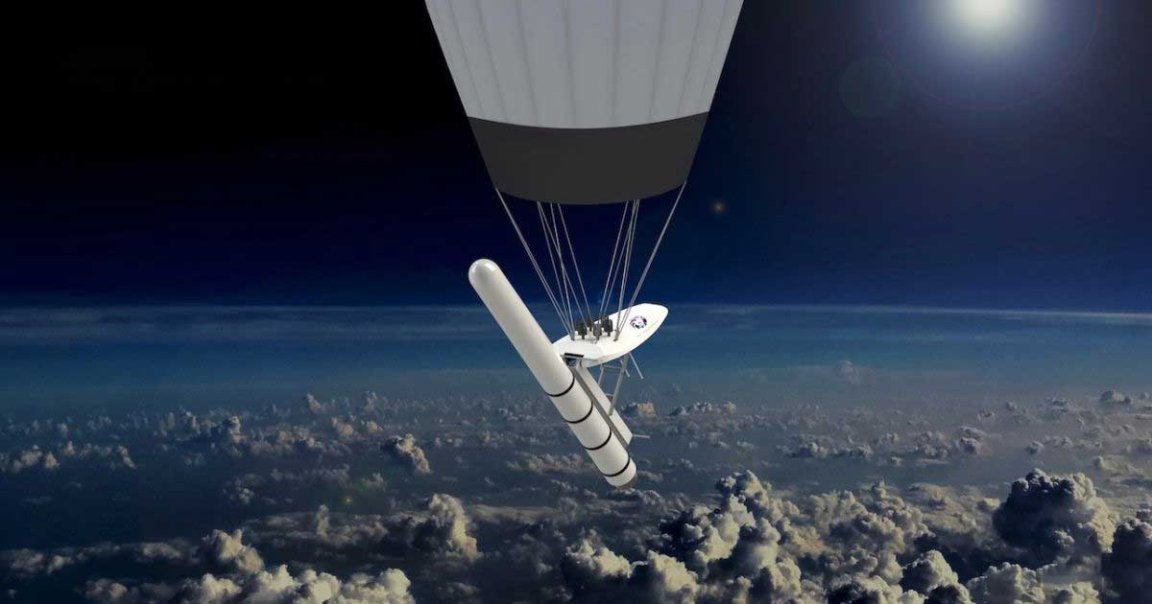
Rockoon
Los Angeles startup Leo Aerospace is developing a system that could allow spacecraft to launch after being dropped from massive hot-air balloons at 60,000 feet, Space.com reports.
The high altitude balloon platform, called Regulus, features multiple thrusters to maintain its orientation. A special rail system attached underneath allows rockets up to 33-feet in length to be launched, saving the fuel required to get to the balloons’ elevation.
Rocklets
The relatively small rockets have a maximum payload of just 126 pounds.
The entire Regulus system, including the balloon and a rocket, can fit inside a 40 foot shipping container and be placed on semi-trucks, ships, and even airplanes, according to the company’s website.
The company gave a brief presentation of their concept during the U.S. Air Force’s first Space Pitch Day earlier this month. The company received $750,000 from the Air Force at the event.
Thin Air
Individual launches will be pretty expensive, at least to start — about one to three times as much as “ride-share” rockets from the likes of SpaceX charge, according to Space.com.
The company claims to start testing its high-altitude platform in mid 2020. Even without rockets to launch, the balloon could help test technology for future missions to Mars, as the thin air at high altitudes can provide a good Mars analogue, according to Space.com.
READ MORE: Space Startup Aims to Launch Cubesats on Balloon-Lofted Rockets [Space.com]
More on balloons: These Scientists Want to Launch Satellites From Steam Balloons